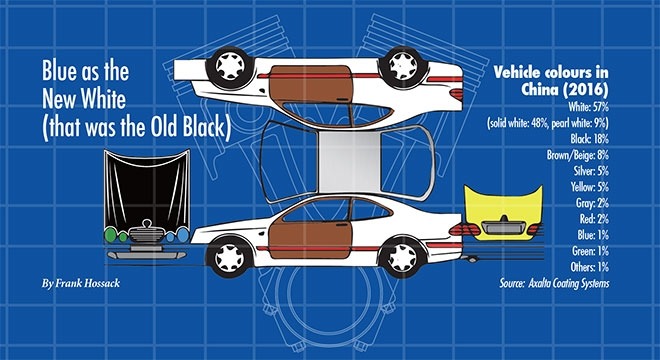The authorities might hate to admit it, but there are many ways in which China is very similar to the USA. Take the size of the country, for example. Or its geography. Or the location of its major centres of population. Now, look at the law of the road. Drive on the right, turn right on a red unless otherwise indicated, etc.
To be sure, there are a thousand ways in which China is very different from every other country, as the pages of this very publication are fond of divulging, yet there is evidence emerging that shows China is more and more falling in line with international norms, and it is here again that we turn to the tarmac to draw out conclusions.
It is relatively recently that all cars in China were black. This was the colour of authority, demanding the utmost of respect from all around. Little else could provide more face than a big black car, preferably one imported from Germany.
In just a few short years, the pendulum has swung the other way, metaphorically and literally. Black has become white. It is now the dominant colour on Chinese roads, and as can be seen from the Global Automotive 2016 Colour Popularity Report above, undertaken by Axalta Coating Systems, when its near cousin pearl is also factored in, white now accounts for 57 percent of cars on the road in the Middle Kingdom.
There are both global and localised reasons for this trend. The rise of white as a vehicle colour coincided nicely with a similar trend in domestic appliances, that in turn was followed by a tiny little device called “iPod”. Around the same time, vehicular design aesthetics began shunning the smooth curves of old, while adopting angular edges and sculpted panelling. White showed off the new look better than any other colour.
On a local level, the popularity of white can be linked to increased levels of confidence in Chinese people, and a desire to show their individuality. A white car to take the family to the airport for a holiday abroad has become one of the preferred ways to show off. Then somebody pointed out that white better reflects heat and as a result needs less air conditioning. Someone else then piped in that white does not show the dirt and is better at hiding minor dents. Anyone else mention the craze for white skin?
The tide may be set to turn once again. Stand in any lift and notice how the white phones of the minority now seem dirty and old fashioned. Back on the roads, most Chinese auto manufacturers have stopped charging extra for white paint.
Fashion remains a fickle beast at best, but the car industry, for now, remains relatively united in the belief that two, at present fairly unpopular colours, shall before long become more dominant. In one corner, the retro leap back to the ‘70s that is brown, or more specifically, its modern-day more trendy versions; Burnt Oak, Copper Pulse and Metallic Mahogany. In the other corner, blue. Possibly the easiest colour to customise, blue is also versatile, what with its many gray and green relatives.
If the rise of white was influenced by MP3 players a decade ago, more anecdotal evidence exists today in the trend for child education. US crayon maker Crayola recently announced that it shall drop one of its key colours, dandelion, and replace with something “in the blue family”.
Bring it on; old fashioned conservative blue for the socialists.









